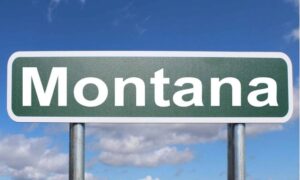Forecasting Occupancy for an RV Resort: A Detailed Guide
Occupancy forecasting is a critical aspect of managing an RV resort, as it helps in planning resources, setting rates, and improving overall guest experience. Here’s a detailed guide on how to effectively forecast occupancy for an RV resort.
1. Understanding the Basics of Occupancy Forecasting
- Definition: Occupancy forecasting involves predicting the number of guests who will stay at your RV resort over a given period.
- Importance: Accurate forecasts enable better staffing, inventory management, and financial planning.
2. Analyzing Historical Data
- Review Past Occupancy Rates: Examine occupancy trends from previous years. Pay attention to peak seasons, holidays, and local events that influenced higher occupancy.
- Identify Patterns and Anomalies: Look for consistent patterns and anomalies. Understand why certain periods had low or high occupancy.
3. Considering Seasonal Trends
- Identify Peak and Off-Peak Seasons: Determine the times of the year when your resort historically sees more visitors.
- Weather and Climate Impact: Weather plays a significant role in RV travel. Factor in local climate conditions for different times of the year.
4. Evaluating Market Trends
- Industry Trends: Keep abreast of overall trends in the RV industry, such as the rise in RV ownership or preferences for certain types of RV parks.
- Competitor Analysis: Monitor occupancy rates and promotional strategies of nearby RV resorts.
5. Incorporating Local Events and Holidays
- Event Calendar: Create a calendar of local events and holidays that can affect your occupancy.
- Event Impact Analysis: Estimate the potential impact of each event on your occupancy rates.
6. Using Occupancy Forecasting Tools
- Software Solutions: Implement specialized software designed for occupancy forecasting in the hospitality industry.
- Algorithmic Forecasting: Utilize algorithms that consider various factors like historical data, current bookings, and market trends.
7. Assessing Current Bookings
- Advance Bookings Analysis: Regularly analyze the number and type of advance bookings.
- Cancellation Trends: Track cancellation rates and reasons to adjust your forecasts.
8. Monitoring External Factors
- Economic Factors: Economic conditions can influence people’s travel decisions. Keep track of the broader economic environment.
- Social Factors: Social trends, like the popularity of RVing among different age groups, can impact occupancy.
9. Continuous Adjustment and Real-Time Data
- Adaptability: Continuously adjust your forecasts based on real-time data and emerging trends.
- Feedback Loop: Use guest feedback to understand preferences and potential repeat visits.
10. Communication and Collaboration
- Internal Communication: Share occupancy forecasts with your team for better coordination.
- Collaboration with Local Businesses: Partner with local businesses for cross-promotional opportunities that can influence occupancy.
11. Reporting and Analysis
- Regular Reporting: Create regular reports on occupancy forecasts versus actual occupancy.
- Performance Analysis: Analyze the accuracy of your forecasts and understand where improvements can be made.
Conclusion
Effective occupancy forecasting for an RV resort is a dynamic and ongoing process. It requires a combination of historical data analysis, market understanding, and the use of advanced forecasting tools. Regular adjustments and internal communication are key to ensuring that your forecasts are as accurate as possible. By mastering the art of occupancy forecasting, you can significantly enhance the operational efficiency and profitability of your RV resort.
Source: MMCG Invest, LLC



































